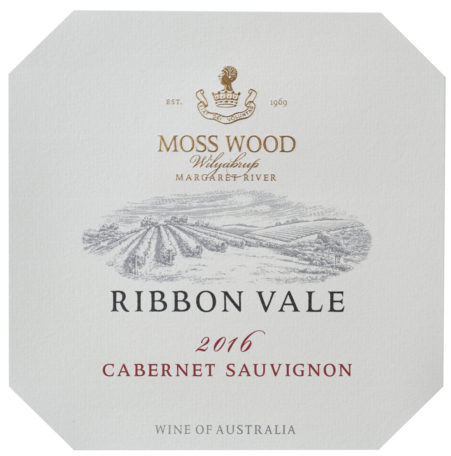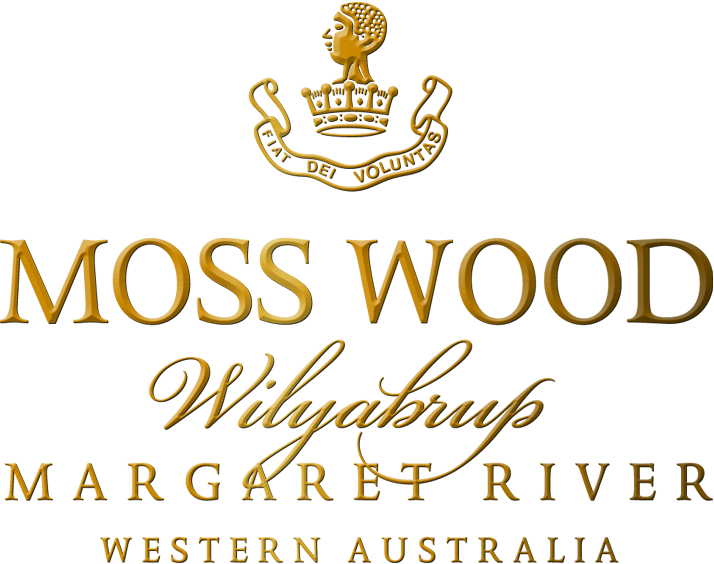Moss Wood Ribbon Vale 2016 Cabernet Sauvignon

Wine Facts
| Median Harvest: |
Cabernet Sauvignon – 23/03/2016 |
| Bottled: |
09/08/2018 |
| Released: | 03/11/2018 |
| Yield: |
Cabernet Sauvignon 4.29 t/ha |
| Median Harvest Ripeness: |
Cabernet Sauvignon 13.3⁰ Be |
| Alcohol: | 13.5% |
Tasting Notes
Colour and condition: The hue is deep, brick red. Condition is bright.
Nose: In line with such a good vintage, the first impression is all about berry fruits – blackberry, mulberry and red currant, sitting over the usual Ribbon Vale vineyard stamp which we think of as leather and eucalypt. This is not to say the wine is simple but rather there is a bright, buoyant note to the aromas, as each of the varieties in the blend signal their presence. Long term barrel age has built in tarry characters and a very light touch of toasty oak, ensuring the typical Cabernet Sauvignon complexities.
Palate: Similarly, the fruit flavours reveal themselves, filling the front and mid-palate with lots of berries and dark jubes. A firm structure sits underneath, with acidity that brightens the flavours, plus Ribbon Vale’s dense tannin providing a concentrated platform on the finish. The oak is light touch right at the end.
Vintage Notes
Readers who’ve been following the Moss Wood releases over the last year or so will have noted our enthusiastic commentary about the 2016 vintage so there will be no surprise we now report with similar excitement about the Ribbon Vale reds. There is much to like about them.
Initially the season behaved quite normally. Rainfall had been very close to average, so there was plenty of moisture in the soil and our dry grown vineyards had as good a start as we can hope for. Temperatures were warm enough during spring to encourage an early flowering with Cabernet Sauvignon being a week ahead of normal and Cabernet Franc and Merlot 2 weeks.
Of course, the Laws of Maximum Inconvenience were operating as normal because warmer conditions weren’t available when we needed them during flowering and all 3 varieties suffered from the wet and cold conditions that moved through Wilyabrup in the last week of October.
As a consequence, yields were down for each – Cabernet Sauvignon by 40%, Cabernet Franc by 36% and Merlot by 45%.
Things settled down after this until the much-discussed big rain in mid-January threw a spanner in the works. As with the other varieties, the Ribbon Vale reds were all still green enough not to be affected by splitting and rot. After this, normal transmission resumed and we kept disease and birds at bay to have a healthy crop ready to harvest in early March.
There is one thing we can’t quite explain. In the end, despite flowering 2 weeks early, Merlot ripened effectively one week later than average, on 24th March, meaning it had taken 139 days to go from flowering to harvest, 3 weeks longer than average. Not that we fuss too much about these things but statistically, this is extremely unusual and we’re at a loss to come up with a clear explanation. The most obvious is Merlot reacted more than the other varieties to the January rain but this would normally manifest itself as a significant, upward yield fluctuation but as we can see above, the opposite happened and the bunches were around 10% lighter than average. Just when we think we’ve seen it all, Mother Nature throws a curve ball. We’ll have to dig a little deeper to try and learn more.
Returning to the point, each variety sailed comfortably through to full ripeness and fruit quality and flavour were excellent. A notable point for 2016 is flavour ripeness was achieved at slightly lower sugar levels, meaning the finished wines display good fruit intensity with more elegance on the palate, courtesy of the accompanying lower alcohols. Each variety was picked by hand, Cabernet Franc at 13.5° Baume on 12th March, Merlot at 12.9° Baume on 24th March and Cabernet Sauvignon at 13.3° Baume on 23rd March.
Production Notes
All 3 varieties were destemmed and sorted to remove any contaminating leaves and stems and Cabernet Sauvignon and Cabernet Franc were then placed into small, open fermenters. Merlot was transferred into small, closed fermenters. The reason for the variation is we have greater success in extracting Merlot’s colour and tannin in vessels that can be pumped over, not plunged. The reasons are not clear, other than to say if there’s a variety that will be different, it’s Merlot!
Fermentation for all was with multiple yeast strains, and each batch was hand-plunged, or pumped over, 3 times per day and tasted daily to monitor tannin balance.
Cabernet Franc was pressed after 9 days, Merlot after 14 days and Cabernet Sauvignon after 16 days. It was another noticeable feature of 2016 that all 3 reached good tannin balance relatively quickly compared to previous years and spent less time on skins.
After pressing each batch underwent malolactic fermentation in stainless steel and once completed, they were adjusted for acidity and SO2 and racked to barrel through March and April 2016. All barrels were 228 litre French oak of which 14% were new.
The final blends were tasted and prepared in January 2018. The Cabernet Sauvignon was thought best at 94% Cabernet Sauvignon, 3% Cabernet Franc and 3% Merlot. The Merlot looked best as a combination of 94% Merlot and 6% Cabernet Franc.
After blending in stainless steel, the finished wines were racked back to barrel where they stayed until the second week of June 2018. After blending for the final time, fining trials were carried out and the Cabernet Sauvignon remained unfined but the Merlot tannin balance was improved with a light egg white fining. Both wines were then sterile filtered and bottled on 9th August, 2018.
Cellaring Notes
It is amusing to write about a Cabernet Sauvignon wine as having such prettiness but this signals the volume of fruit it retains and this, combined with the complexity and structure, will see it cellar very well. For those wanting to see some bottle development, we recommend a minimum of 10 years but full maturity will require at least another decade of aging beyond that.
